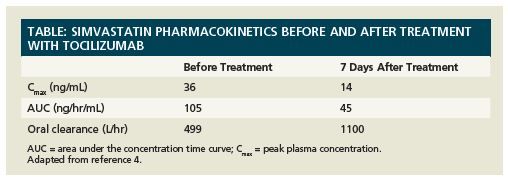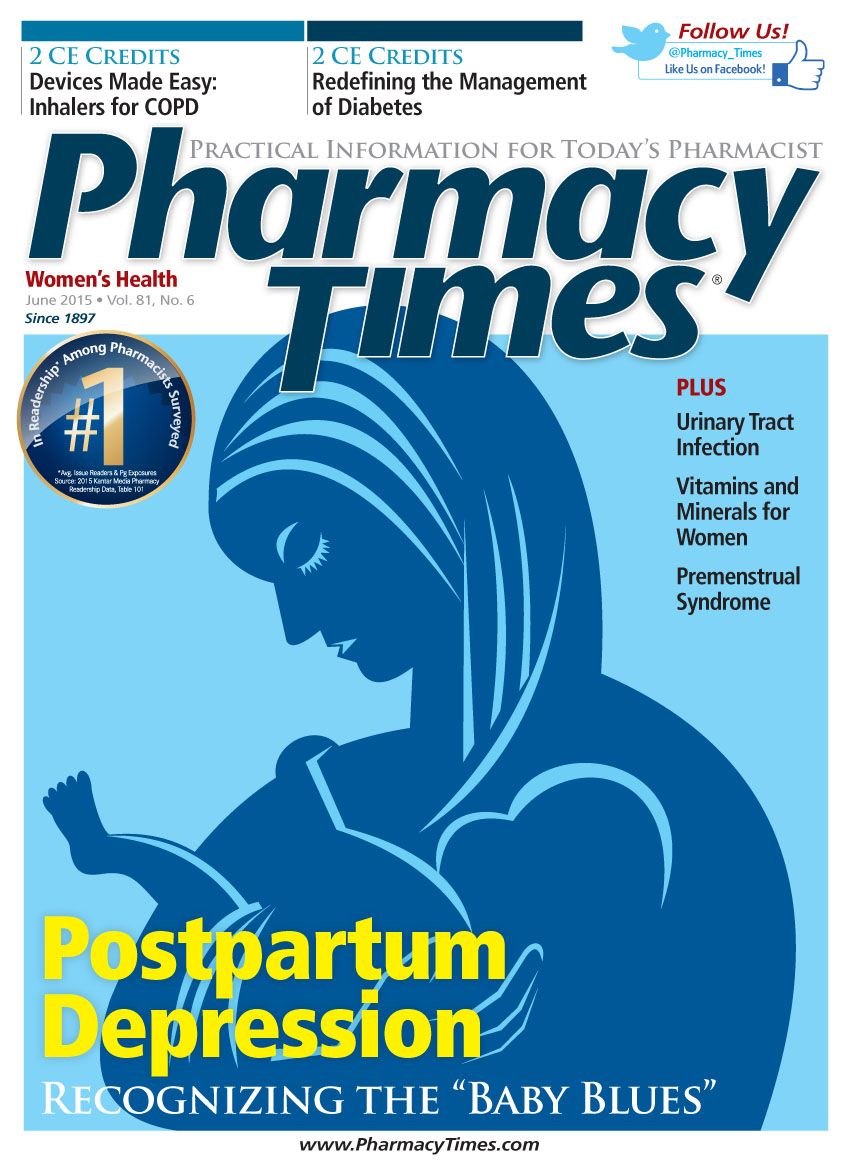Publication
Article
Pharmacy Times
Drug-Disease Interactions
It is possible for a precipitant drug to indirectly affect the object drug and for effective drug therapy to enhance the elimination of an object drug by treating a disease that inhibits drug elimination.
This column usually deals with interactions that occur when one drug directly affects the pharmacokinetics or pharmacodynamics of a second drug. It is possible, however, for a precipitant drug to indirectly affect the object drug. A common example would be drug-induced renal or hepatic dysfunction that reduces the elimination of another drug. It is also possible for effective drug therapy to enhance the elimination of an object drug by treating a disease that inhibits drug elimination.
Effect of Disease on Drug Metabolism
The activity of several cytochrome P450 enzymes (eg, CYP1A2, CYP3A4, CYP2C19, CYP2C9) can be inhibited by disease states that are characterized by infection or inflammation.1-3 These disease states increase cytokine concentrations in response to infection, trauma, ischemia, immune-activated T cells, and toxins. Cytokines associated with this CYP inhibitor effect include interleukin- 6 (IL-6), IL-1, tumor necrosis factor, and interferon. During active disease periods, the metabolism of drugs may be reduced by the elevated cytokine concentrations; however, it is unknown if these cytokines reduce CYP activity in the liver or the intestinal enterocytes, or both. Treatment of the disease may reduce cytokine production and the suppressant effect on CYP enzymes.
Schmitt et al reported on the simvastatin plasma concentrations in 12 patients with rheumatoid arthritis (RA) before and after treatment with tocilizumab (Actemra).4 Patients were administered a single 40-mg dose of simvastatin before and at 7 and 35 days after a single dose of tocilizumab 10 mg/kg. Following treatment with the IL-6 antagonist, the mean simvastatin peak plasma concentration and area under the concentration time curve (AUC) were reduced by close to 60% compared with baseline values. The reduction in simvastatin AUC following tocilizumab administration correlates to approximately a doubling of its oral clearance. At 35 days after the tocilizumab dose, simvastatin plasma concentrations were still 40% less than levels prior to the tocilizumab dosing.

The inhibition of CYP3A4 activity by cytokines is likely responsible for the increased simvastatin concentration observed prior to tocilizumab treatment. There was no observable change in the half-life of simvastatin after treatment, suggesting that the change in simvastatin AUC may have been due to increased first-pass effect rather than a change in systemic clearance. It appears that cytokine inhibition of metabolism is rapidly reversed by agents that reduce the inflammatory response (Table).
A decrease in omeprazole plasma concentration was noted following tocilizumab administration to patients with RA.5 The decrease was about 40% in extensive metabolizers of CYP2C19, but less than 20% in poor metabolizers. These data suggest that the activity of both CYP2C19 and CYP3A4 is reduced in patients with RA and this inhibition is reversed by IL-6 inhibition.
Clinical Perspective
The magnitude of the change in a drug’s elimination following the administration of a cytokine inhibitor will likely be limited to the degree of cytokine-induced inhibition of the CYP enzymes. Based on the limited data available, cytokineinduced inhibition may approach a 50% reduction in drug clearance. In disease states with chronic inflammation, drug dosages may be adjusted downward to avoid adverse events.
Treating the inflammation with a cytokine inhibitor will result in an increase in drug clearance and reduction in drug concentration. For drugs with a narrow therapeutic range (eg, warfarin, theophylline, cyclosporine) or in cases in which low plasma concentrations pose a risk of therapeutic failure (eg, antivirals, immunosuppressants, antineoplastics), the increase in clearance may result in an altered patient response. Drug dosage may require an increase when cytokine inhibitors are administered. Patients treated with tocilizumab or other cytokine inhibitors should be monitored for altered response to long-term medications that undergo CYP metabolism.
Drs. Horn and Hansten are both professors of pharmacy at the University of Washington School of Pharmacy. For an electronic version of this article, including references, if any, visit www.hanstenandhorn.com.
References
- Aitken AE, Richardson TA, Morgan ET. Regulation of drug-metabolizing enzymes and transporters in inflammation. Annu Rev Pharmacol Toxicol. 2006;46:123-149.
- Kulmatycki KM, Jamali F. Drug disease interactions: role of inflammatory mediators in disease and variability in drug response. J Pharm Pharm Sci. 2005;8(3):602-625.
- Aiken AE, Morgan ET. Gene-specific effects of inflammatory cytokines on cytochrome P450 2C, 2B6 and 3A4 mRNA levels in human hepatocytes. Drug Metab Dispos. 2007;35(9):1687-1693.
- Schmitt C, Kuhn B, Zhang X, Kivitz AJ, Grange S. Disease-drug-drug interaction involving tocilizumab and simvastatin in patients with rheumatoid arthritis. Clin Pharmacol Ther. 2011;89(5):735-740. doi: 10.1038/clpt.2011.35.
- Terao K, Tsuru T, Suzaki M et al. Drug-disease interaction study of tocilizumab in patients with rheumatoid arthritis — IL-6 signal inhibition normalized cytochrome P-450 enzymes expression which was reduced by inflammation. Int J Rheum Dis. 2010;13(1 suppl):100.







